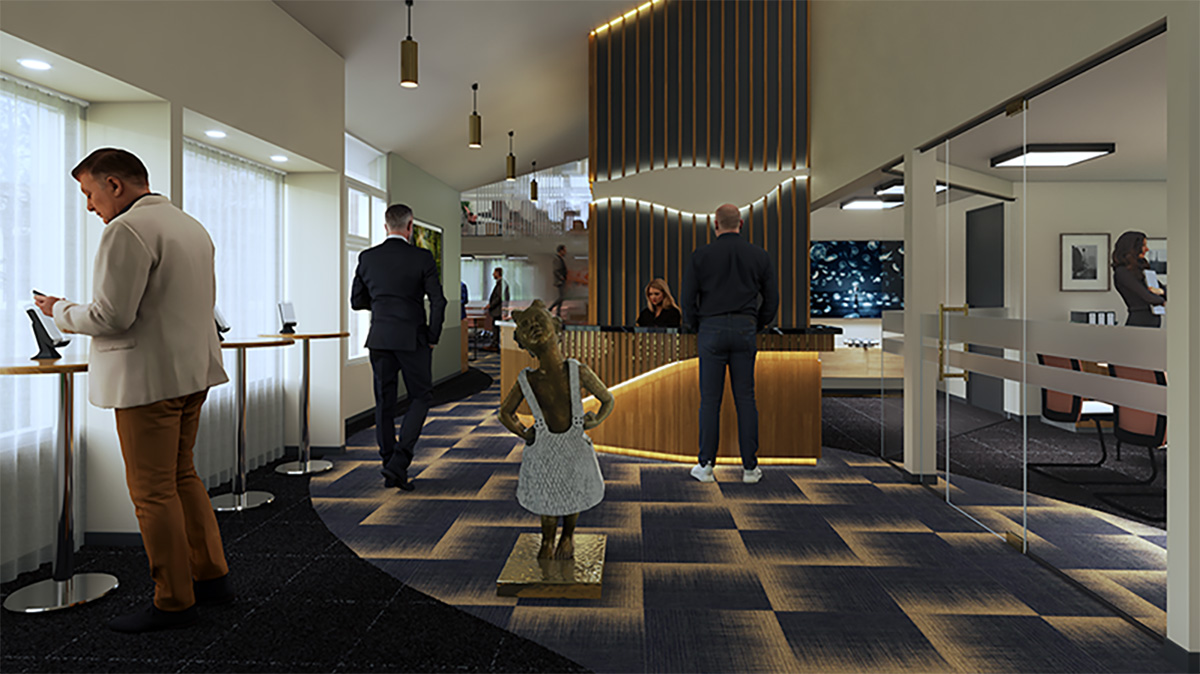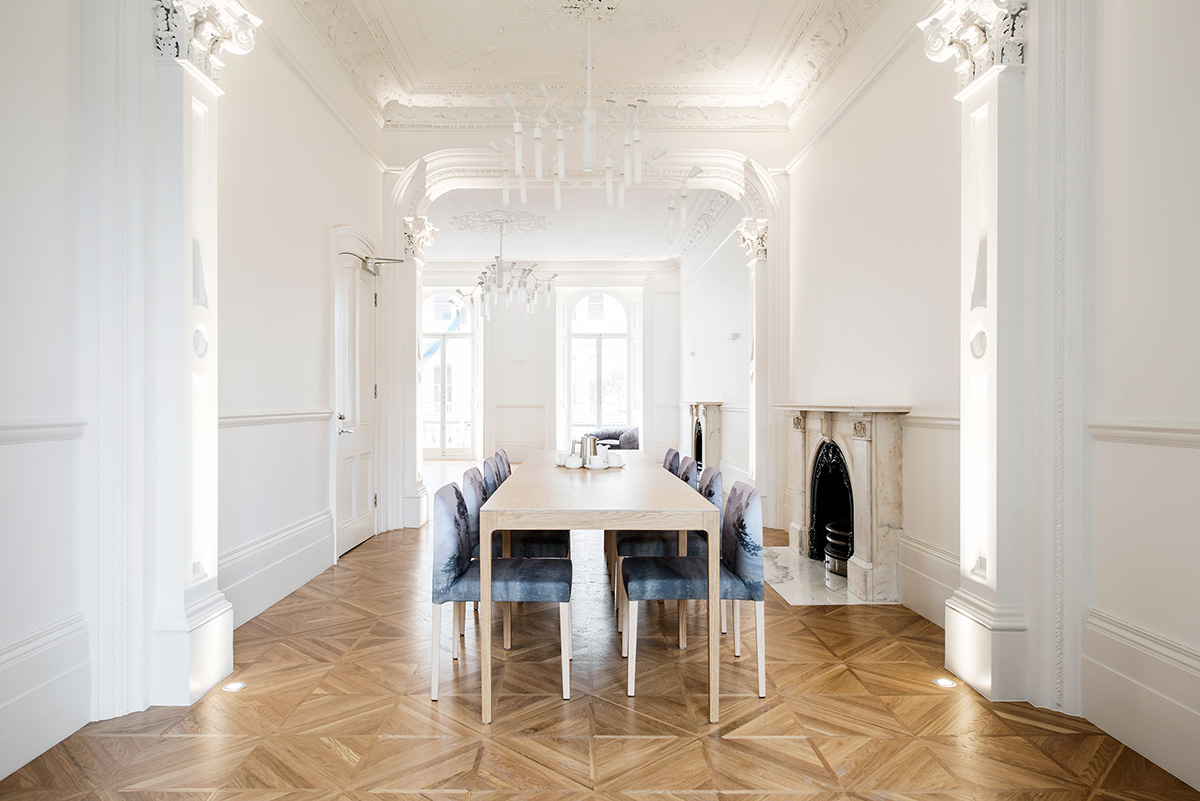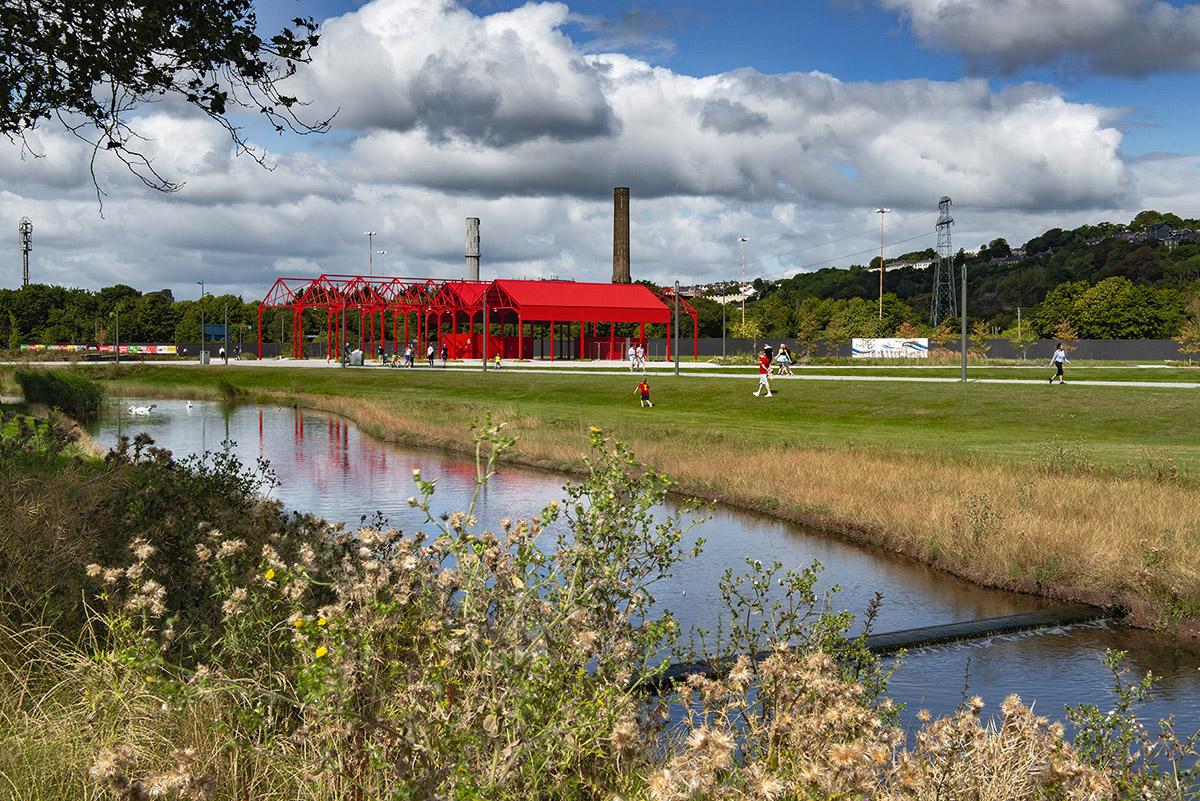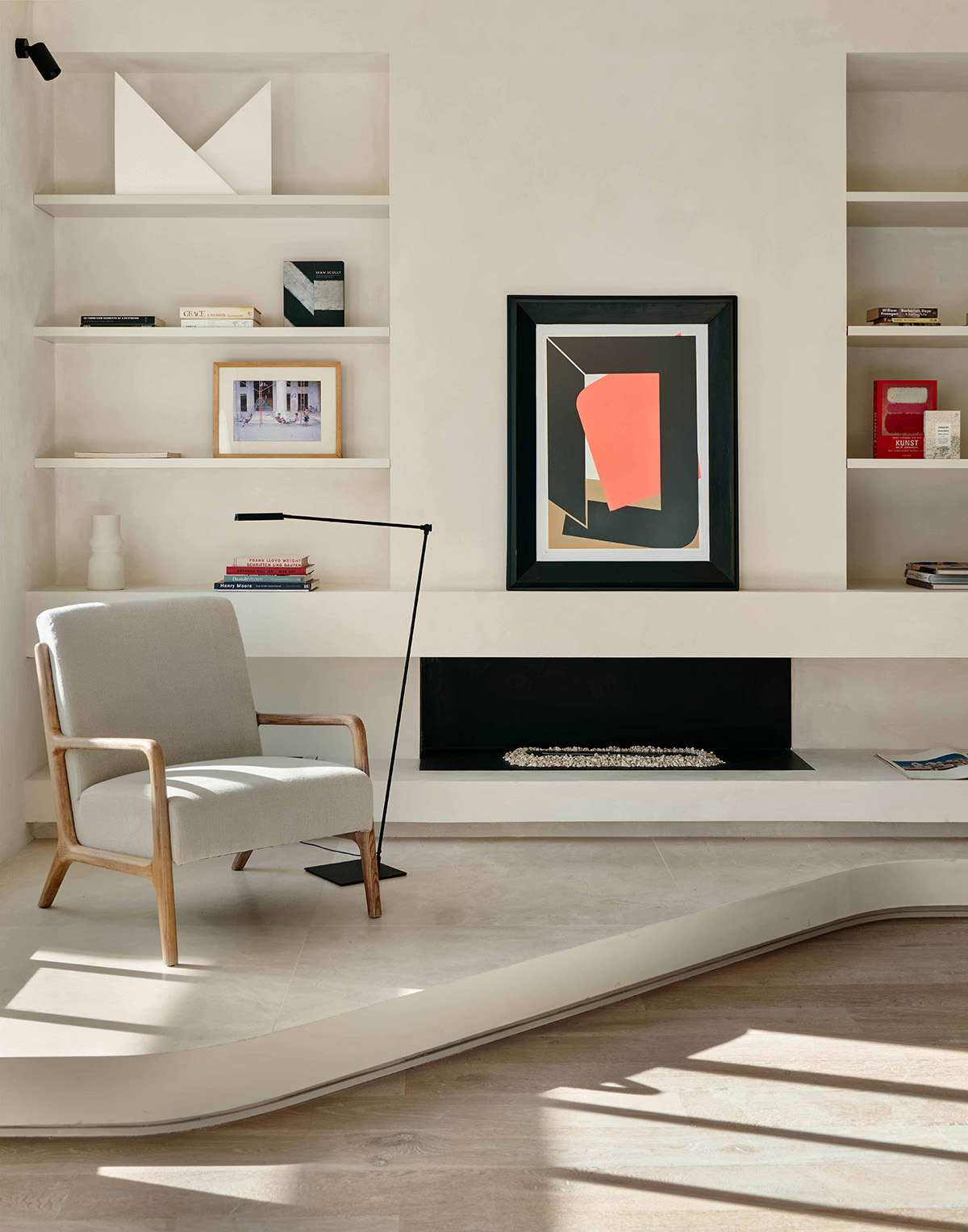Zeppelin Architects: In liaison with Iceland’s powerful environment
By Signe Hansen | Photos: Zeppelin Arkitektar
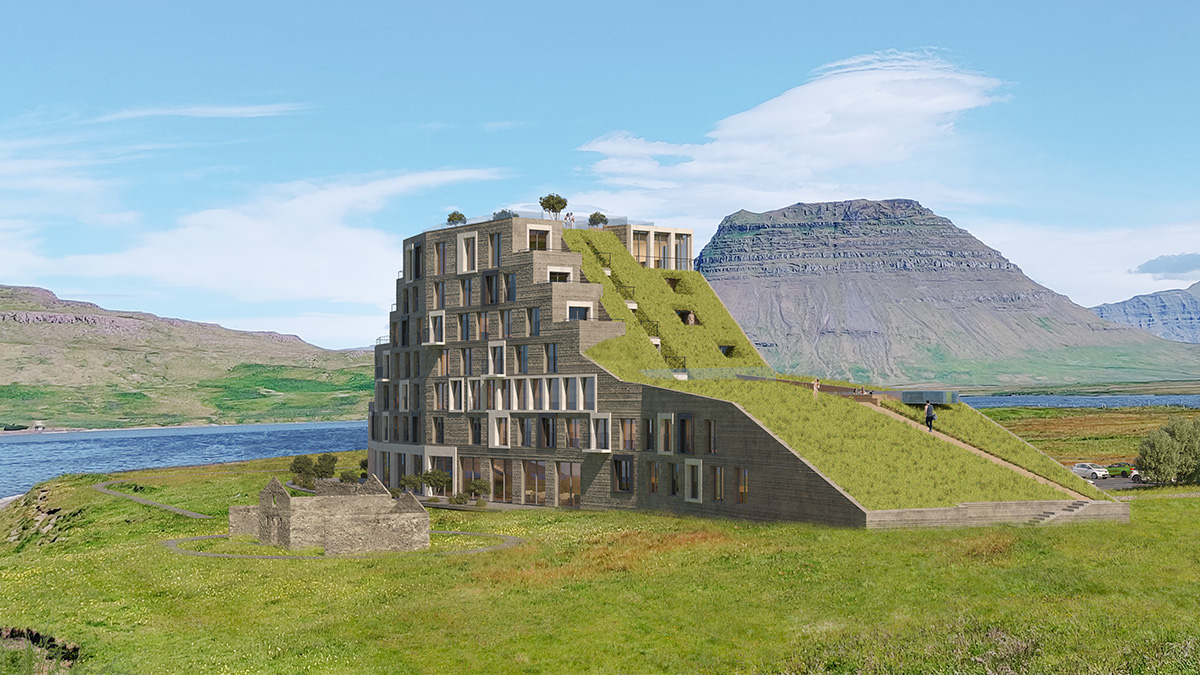
Hotel: Inspired by the Icelandic landscape and traditional building methods as well as the Mausoleum of Hadrian in Rome, Árnason, creates buildings that mirror their surrounding landscape.
Inspired by his time studying in Spain, Orri Árnason, the founder of Zeppelin Arkitektar (Architects), seeks to combine the green beauty of Spanish cities with the resourcefulness of his Icelandic predecessors.
Founded in 1997, Zeppelin Architects has designed buildings for a wide variety of purposes, including a summer house, which was nominated for the Icelandic Architecture Prize by the late artist Birgir Andrésson who created a portrait (in words) in its interior. The summer house is located in Þingvellir, where the settlers founded the parliament in 930, Iceland’s most sacred place and now a national park. The area is part of a fissure zone running through Iceland, being situated on the tectonic plate boundaries of the Mid-Atlantic Ridge. Placed on the shore of the Þingvallavatn Lake the house was designed to make the most of the Icelandic landscape’s greatest advantage – its amazing views – and to minimise the effect of its greatest challenge – its strong winds.
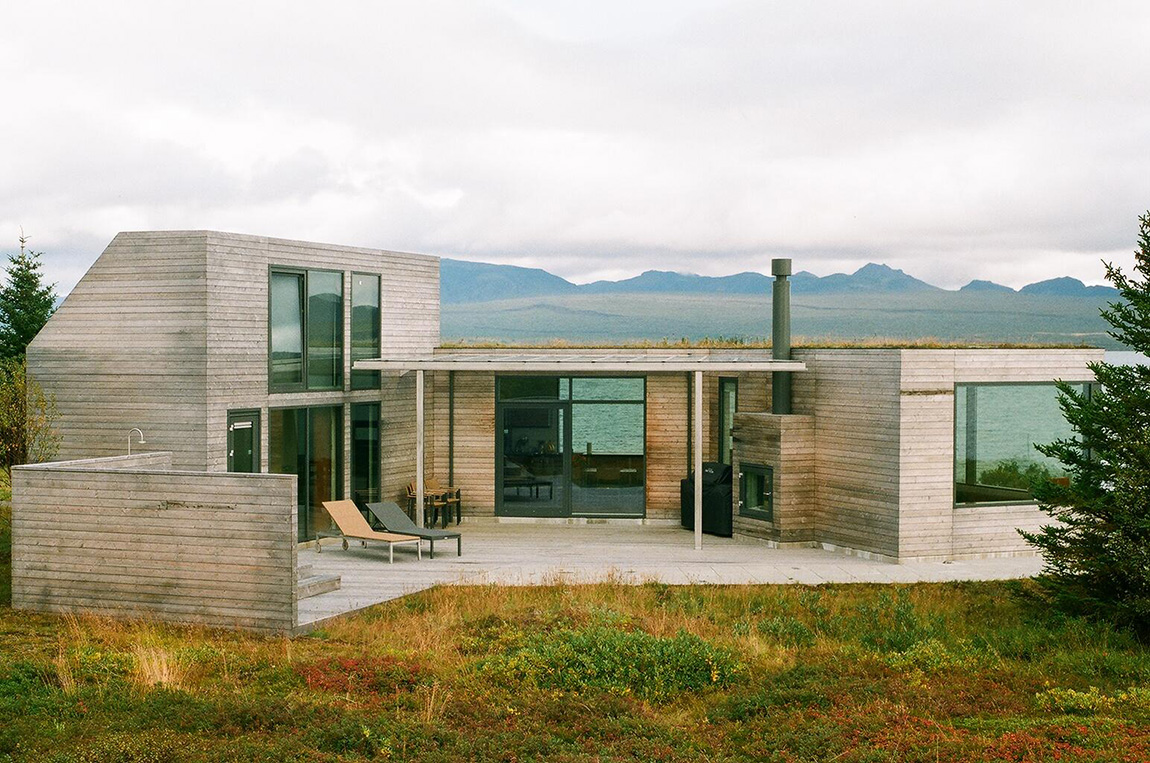
Summerhouse: Located on the shore of the Þingvallavatn Lake, the original design of this summerhouse was nominated for the Icelandic Architecture Prize.
“The challenge was that all the directions were wrong – the view was facing towards the wind, meaning that if we created a shelter, there would be no view. So, I had to twist and turn the building while also maintaining the strict regulations on size, which applied due to its location in a national park,” explains Árnason.
The result is a beautifully simple building with three small modules connected at odd angles to create an inviting sheltered terrace for residents to sunbathe and enjoy the wonderful views of the adjacent lake. Moreover, large panorama windows on both sides of the building allow even more views to pass through, both inside and outside.
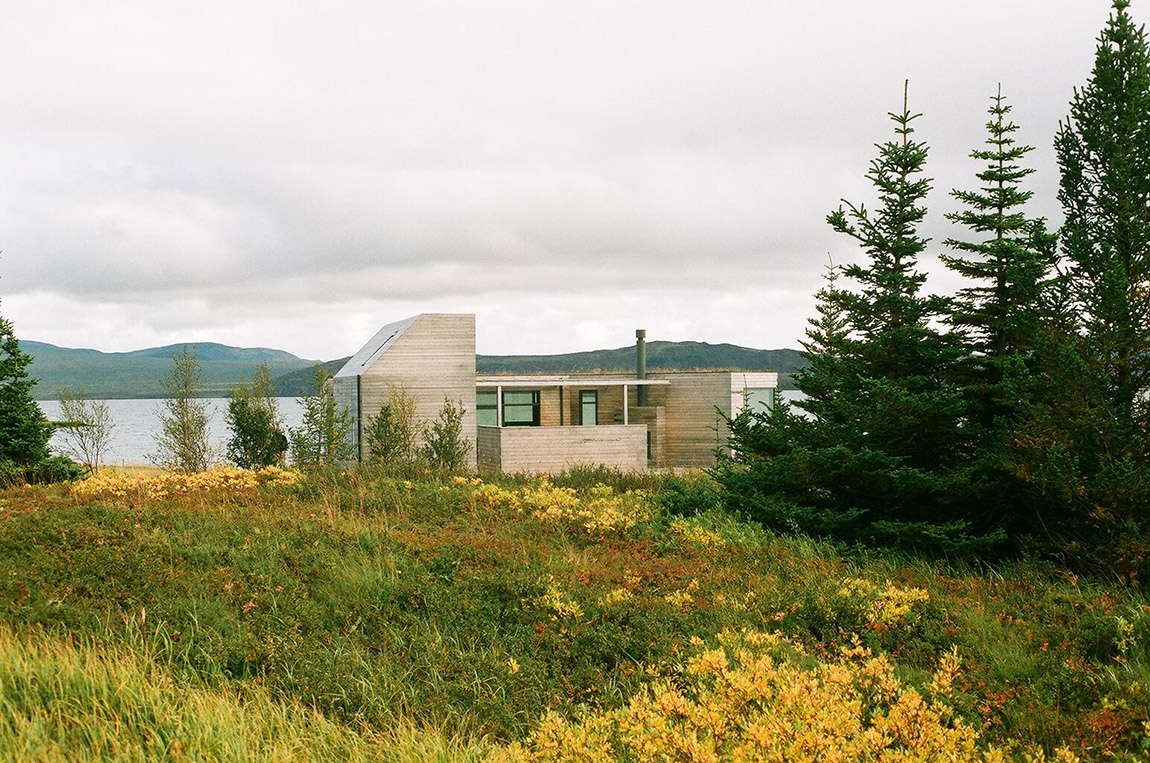
Spanish inspiration
Prior to founding Zeppelin Architects, Árnason spent nine years living and studying in Madrid, Spain. And, while it was rather coincidental that he ended up there, the stay became defining for his ambitions and visions as an architect .”I went with my mother to the cinema to see Carmen, a flamingo adaption by Carlos Saura, a Spanish director, and I was completely hypnotised and told my mother then and there that I was going to Spain to study architecture,” he explains. “And, there I went, and danced flamingo.”
Despite not knowing the language and being unable to find any information on how to get into the school, Árnason made his dream come through. Soon after moving to Madrid, he was enraptured by the Spanish aesthetics. “The first time I drove through Paseo de Castillana, the main street in Madrid, I was absolutely fascinated by its magnificence – the beautiful buildings of Rafel Moneo and Javier Oiza and many other architects, the trees, fountains and the life. I was overrun by its beauty, and I always wanted to bring that to Iceland. Unfortunately, here we understand neither the concept of beauty nor magnificence in the context of urbanism. Maybe because we never had a Baroque period. Of course, there is a big difference between a sunny street in Madrid and an icy street in Iceland, but I think we could use the same solutions. With beautiful buildings submerged in trees, we could make the city so much more beautiful, and while the trees give shelter from the sun in Madrid, in Iceland they would give shelter from wind and rain.”
Organic shapes and landscape
Today, Árnason’s past experiences show in, among other things, his work with organic forms that mimic their surrounding landscape. “I have been working on that concept in several buildings. For instance, the way you have a landscape where everything is flat and then a big mountain – I have tried to mimic that by creating hotel buildings that stand out like small mountains or hills, and usually covering the roof with grass or low bushes, sometimes with a swimming pool on top to mirror the mountain lakes, where people go to bathe and fish,” Árnason explains. “But it also a reference to the old Icelandic turf houses and the Mausoleum of Hadrian in Rome, my favourite building from antiquity – now known as the Sant’Angelo Castle, it used to be covered with trees and growth. Obviously, the influences come from many places.”
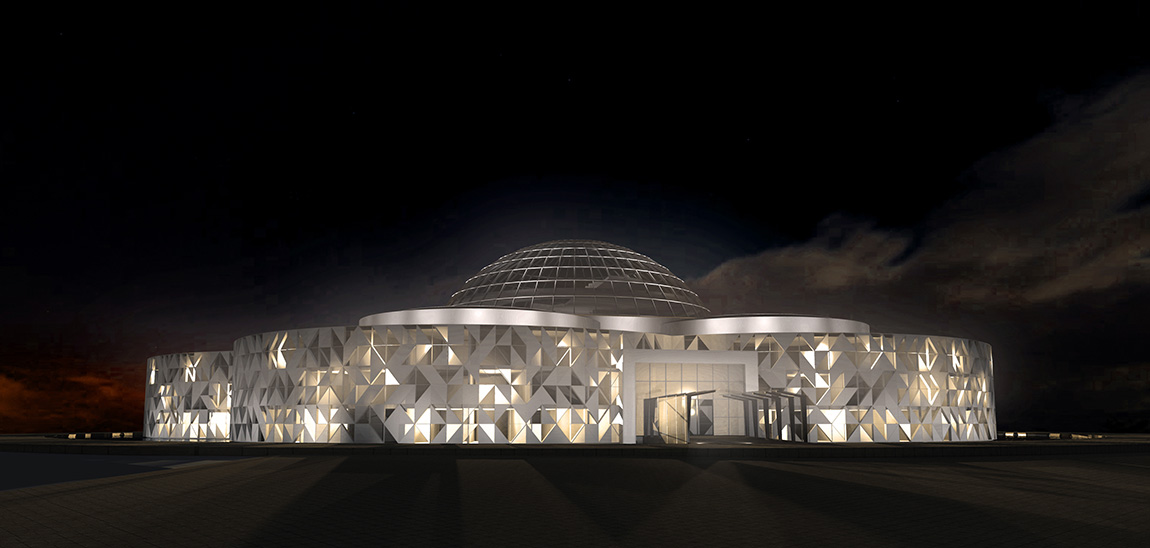
Perlan: This proposal by Orri Árnason sees Parlan, six old water tanks covered by a glass dome in Reykjavik, turned into a sparkling spa hotel.
These hotels also make the most of the views as their spas and restaurants are located in the most privileged places in the buildings. This is also the defining idea, behind Árnason’s idea for Perlan, a transformation of six old water tanks covered by a glass dome in Reykjavik. In his proposal, the dome is turned into a sparkling spa hotel with hot pools circling the dome and providing amazing views of the entire city. “When they built the glass dome to embellish and connect the water tanks, they had this old story in mind, told by Jóhannes Kjarval our most famous painter, of a craftsman who wanted to build a temple covered in mirrors and crystals to increase “the beauty of the earth and the brightness of the heavens, and bring them together”. “I always thought they didn’t finish the building, so I created this proposal because I wanted to finish it,” says the architect and rounds off: “I am very proud of it, and I can´t help but think that its design resembles the proposal for the monument of Isaac Newton, by the visionary French architect Boullée.”
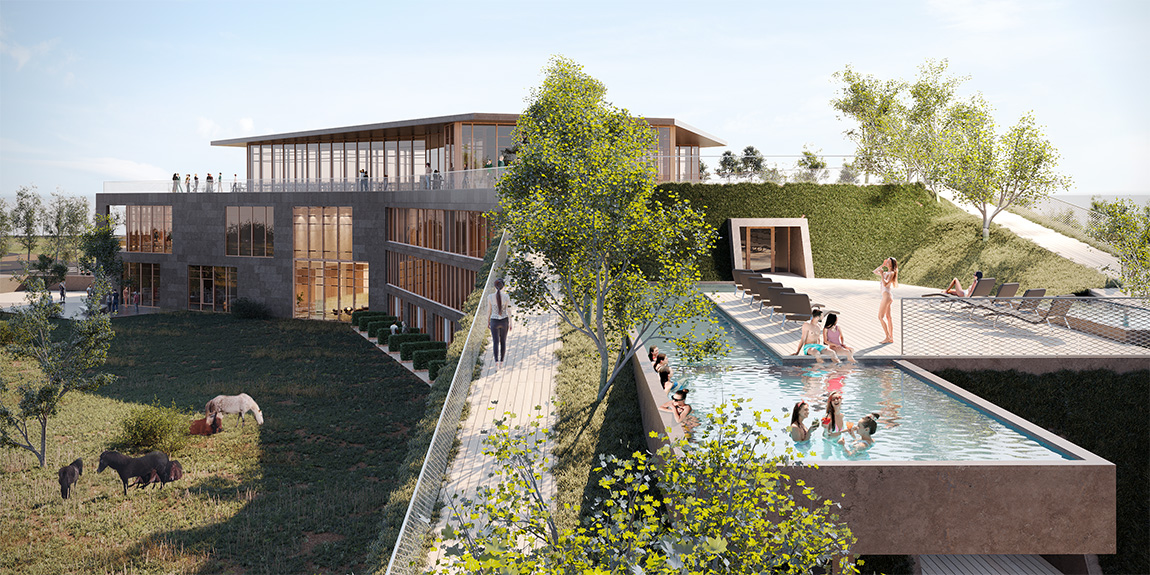
Inspired by the Icelandic landscape and traditional building methods as well as the Mausoleum of Hadrian in Rome, Árnason, creates buildings that mirror their surrounding landscape.
Web: www.zeppelin.is Facebook: Zeppelin Arkitektar
Subscribe to Our Newsletter
Receive our monthly newsletter by email

